
Porsche 911 During the Le Mans 24 Hours – 1/30 second shutter speed
What Is Shutter Speed?
Every camera has a physical shutter, like a curtain, that opens and closes to expose the sensor to the light coming in through your lens when you press the shutter button. The length of time that this shutter is open is called the shutter speed and also sometimes referred to as ‘exposure time’. Shutter speed is one of the three sides of our exposure triangle, along with aperture and ISO, that allow us to control the brightness of our image. These three things work together to give us both creative control and also exposure control for our photos. We can select a fast shutter speed that freezes any action in a photo, or we can select a slow shutter speed that introduces ‘motion blur’ to any moving objects within our image.
Combining a panning motion of the camera (left to right, or right to left movement) with a slow shutter speed can be used to give a sense of speed, as in the car photo that opens this article. It gives a sense of movement to the car, but doesn’t blur out any of the car’s detail if you keep the car in the same spot in the frame as you pan. With the running water in the photo below, the static camera but blurry water gives the water a sense of fluid motion. When you are taking a photo with your camera in a semi-automatic (TV/AV) or manual exposure mode, then consideration must be given to the required shutter speed for your subject. Most of the time we are looking to freeze our subject with a fast enough shutter speed and capture that one singular moment, but sometimes the creative effect of a slower speed can also be desirable. What shutter speed is fast enough? Well that will depend on your subject! Further down this article there’s a handy reference guide that’ll get you started with some typical scenarios.
How is shutter speed measured?
A camera’s shutter speed is measured as a fraction of a second for all speeds that are under a second. For example 1/250 means one two hundred and fiftieth of a second, or 1/8 means one eighth of a second. The shutter speeds that are available to choose from might vary depending on the type of camera you are using, but typically a DSLR will go from 1/4000 all the way to 30 seconds. Further down this page you’ll find a handy reference chart that shows all of the standard options in between. Some pro level DSLRs will allow even faster speeds than 1/8000 and many will have ‘BULB’ mode for shooting at longer than 30 seconds. This mode keeps the shutter open for as long as you hold down the shutter button.
If you double your shutter speed then the shutter will be open for half the amount of time so you half the amount of light that’s reaching the sensor. This is therefore equivalent to a 1-stop change in exposure. To maintain the same overall exposure in our image, we must remember the exposure triangle and either double our ISO, or open up our aperture by one stop to compensate.
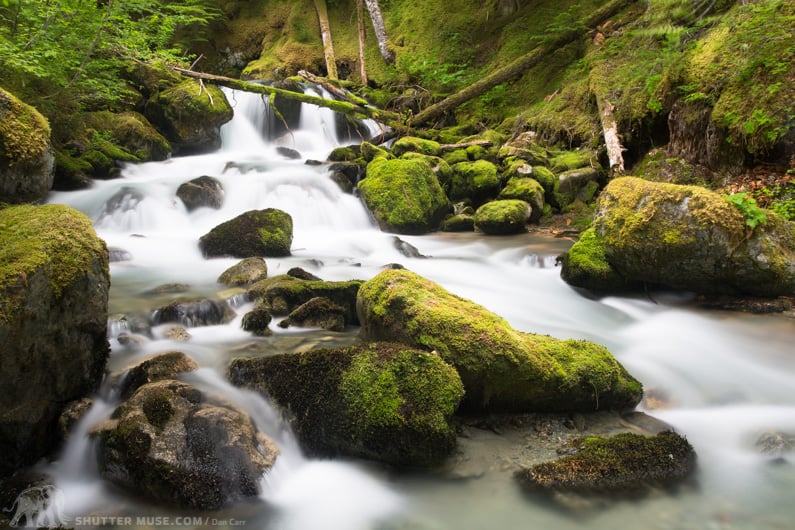
Water running through a creek – 14 second shutter speed
Do you know what your shutter speed is?
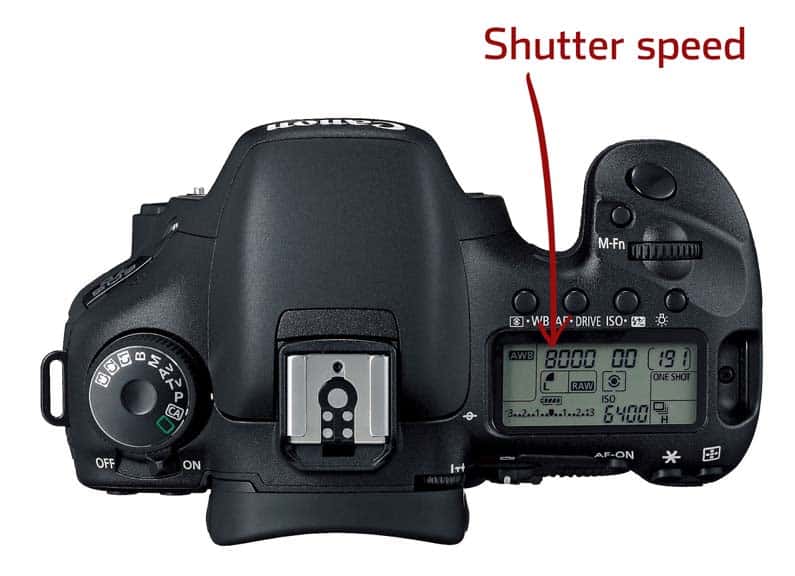
Shutter speed is an important parameter for your exposure so it’s displayed prominently on all cameras. On a DSLR you’ll typically find it in the LCD on the top right-hand side of the camera, as well as displayed beneath the image within the viewfinder. To save space in the display, cameras do not show the speed as a fraction, so if you see ‘500‘ in the display, this means your shutter speed is actually 1/500 second. For exposure times of 1 second or longer, these are typically displayed with a “ to denote seconds for example 1″, 10″ or anything up to 30″.
If you are using a point and shoot camera, or a DSLR with liveview, then the shutter speed will usually be displayed somewhere around the extremity of the image on your main LCD. If you can’t see it, press the ‘info’ button to cycle though various on-screen displays until you see all the exposure information.
Controlling your shutter speed
In your camera’s fully automatic modes, usually designated with a ‘P‘ or an ‘A‘, you won’t have direct control over the shutter speed that’s chosen for your photo, though you might be able to influence the camera’s decision by choosing a ‘scene‘. These are usually simplified situations like ‘sports’ or ‘landscape’. A sports mode will select a faster shutter speed to stop the action, whereas a landscape mode will choose a slower speed and therefore favour a smaller aperture instead.
My goal for you guys though is to get away from using these automated exposure modes and to give you the knowledge to become confident in modes like shutter priority, aperture priority and eventually fully manual exposure mode. When learning about shutter speeds, TV mode (sometimes also designated by an S) is the best to use. This mode is called shutter priority and it allows us to have direct control over the shutter speed, whilst allowing the camera to select the appropriate aperture to get a correctly exposed photo. When a camera is put into shutter priority, particularly DSLRs, it’s almost always the small control wheel right next to the shutter button that allows you to adjust your shutter speed. Using TV mode is a brilliant way to experiment because you can very quickly change your shutter speed to a variety of settings and see the resulting outcome on your LCD screen.
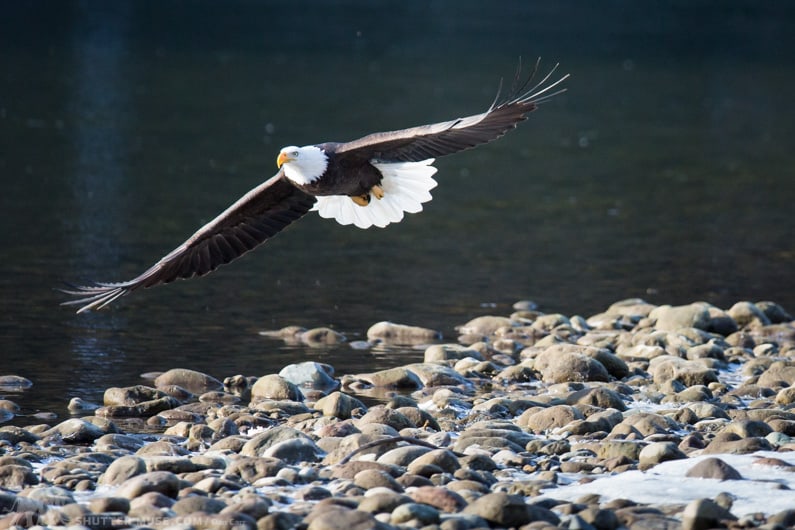
Eagle in flight – 1/2000 second shutter speed
Shutter Speed Chart
Most DSLRs give you the option to choose whether your exposure is adjusted in 1/2 stop, or 1/3 stop increments. The chart below provides you with the common shutter speed options in today’s digital cameras. What you’ll notice if you study it closely is that sometimes, the camera’s chosen value is a slight approximation as some fractional speeds would not be practical to use or display on the camera or in the EXIF data of your image file.
Remember: Each step along the full stop scale equates to a doubling (or halving) of the light that reaches your camera’s sensor.

Shutter Speed Guidelines
If you’re just getting started with your photography then the following table will give you some general guidelines. It’s important to remember though that there’s very rarely any concrete ‘rules’ in photography as part of the whole process comes down to your own style and creativity. On top of this, other techniques often come into play and the very top image of the race car is a good example of this. It might be an action shot, but I used specific technique called ‘panning’ with a very low shutter speed to give a sense of how fast the car was going.
Remember: Use this table as a starting point, but by no means is anything set in stone. Don’t let it hold back creativity!
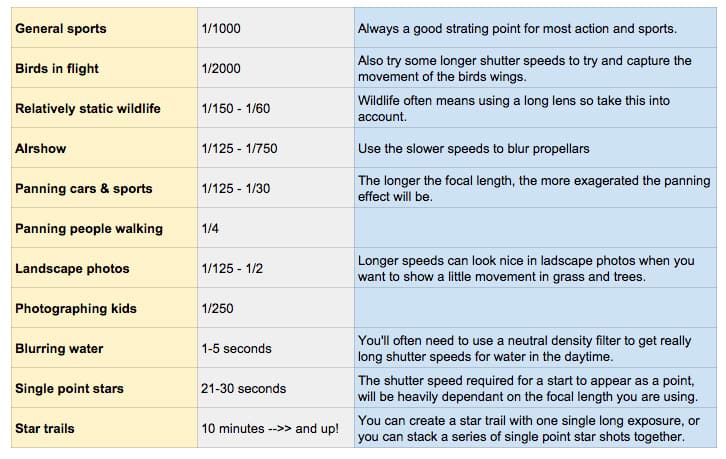
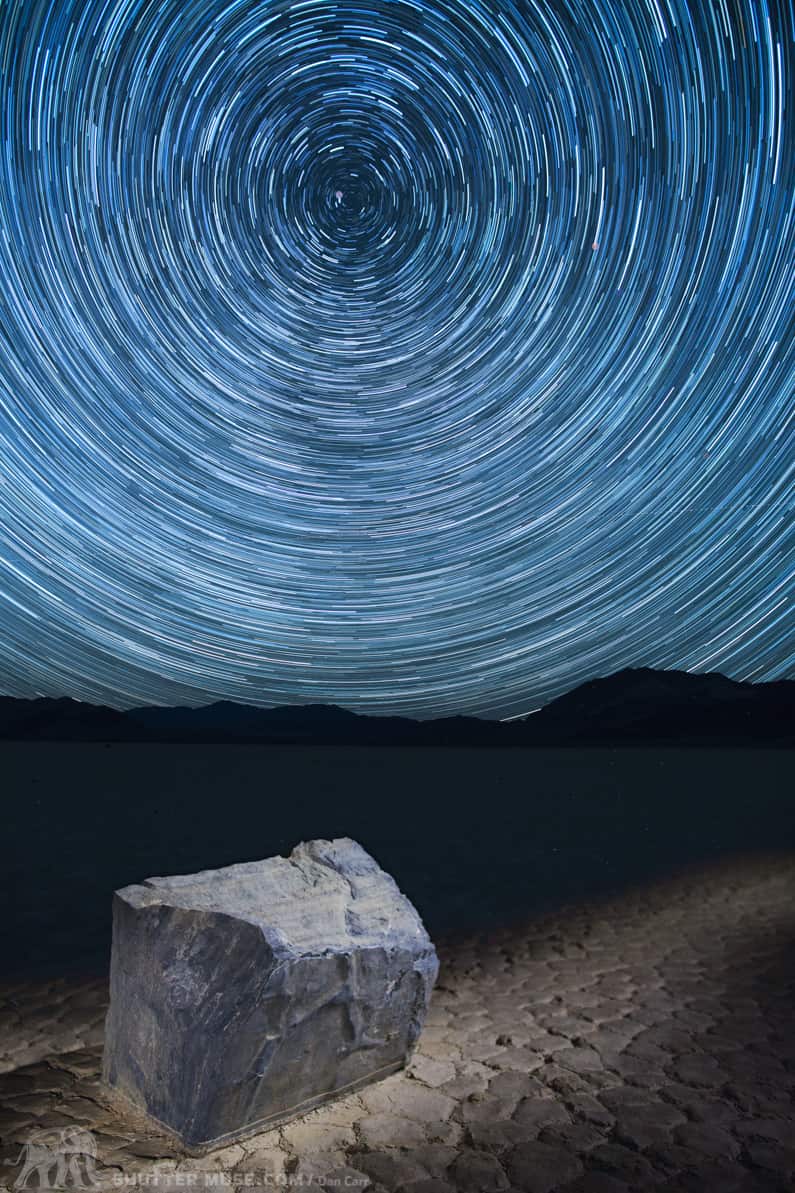
Racetrack Playa star trail
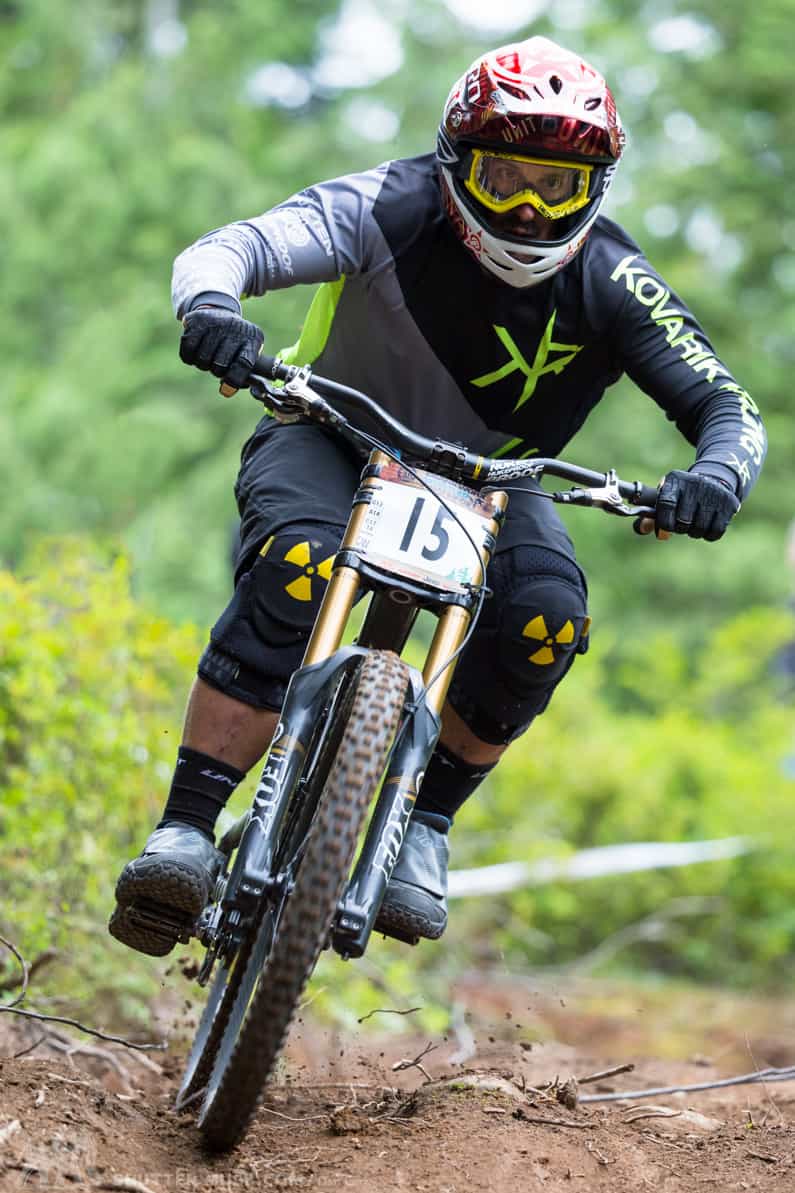
Downhill mountain biker – 1/800 second shutter speed
Angle and position of lens to subject
An often overlooked part of choosing the correct shutter speed is the position of the lens relative to your subject and this is why the table above should only be used as a guide and not a gospel. It’s easier to freeze motion when your subject is coming right towards the camera, than when it’s crossing perpendicular to your lens. If we take the mountain biker in the photo above as our example, you can see that he’s coming almost directly at me and I was able to freeze him perfectly at 1/800 of a second. Had I been standing side-on to the biker as he passed me, 1/800 would not have been nearly enough to make it look sharp in the final image. The relative change of position of the subject is very different during the exposure in those two scenarios. When the bike is coming right at me, as in this photo, he’s roughly in the same spot in the image throughout that 1/800 of a second exposure time. If I was side-on to him though, during that 1/800 of a second, he would be moving a considerable distance from left to right (or vice-versa). So when most people look at freezing action, they tend to think about the speed of the subject first, but in fact great consideration should be given to the angle at which you intend to shoot them. You can even use this to your advantage! Imagine you are trying to shoot this same mountain biker and the light level is getting low. Switch it up to shoot him from this frontal position and you’ll be able to continue shooting for much longer in the low light than you’d be able to if you were shooting him side-on. If your subject is moving diagonally across your frame then you’ll need to choose a shutter speed somewhere in the middle of what you’d pick if he was parallel or perpendicular to your lens.
Physical positioning of the lens can also have an impact on the required shutter speed. If you shoot action close-up with a wide-angle lens then your subject will cross much more of your frame in a given time than they would if you used the same lens but stood 10ft further back. This means that the closer you are to your subject, the faster the shutter speed is needed to freeze motion. On the contrary though, if you are looking for a panning photo with a blurry background, you’ll be able to achieve a greater blur at a faster shutter if you place the lens and subject close together. Always look for ways to use these things to your advantage!
How to get a faster or slower shutter speed
Sometimes you’ll find that the ambient lighting conditions appear to be holding you back from choosing the shutter speed that you really want to use. This is when we really need to think about that exposure triangle of aperture, shutter speed and ISO. To get the longest exposure time possible in bright daylight, we need to have the lowest possible ISO and the smallest possible aperture. If that still doesn’t get your shutter speed slow enough show the motion you want in your photo, then you need to look at using a neutral density filter on your lens. This filter doesn’t apply any special effects, it simply darkens the lens and with less light coming in, you’re able to shoot with a longer shutter speed to get the correct overall exposure.
On the other end of the spectrum, if you are struggling to get a fast enough shutter speed, typically in a low light situation like indoors or after the sun has gone down, then you’ll need to open up your aperture as far as it will go (move it to the smallest number). If this still doesn’t get your shutter speed up to the necessary setting, then you’ll need to increase your ISO. Remember the exposure triangle and how everything doubles. If you double your ISO, you’ll be able to double your shutter speed and still maintain the same overall exposure.
On using tripods
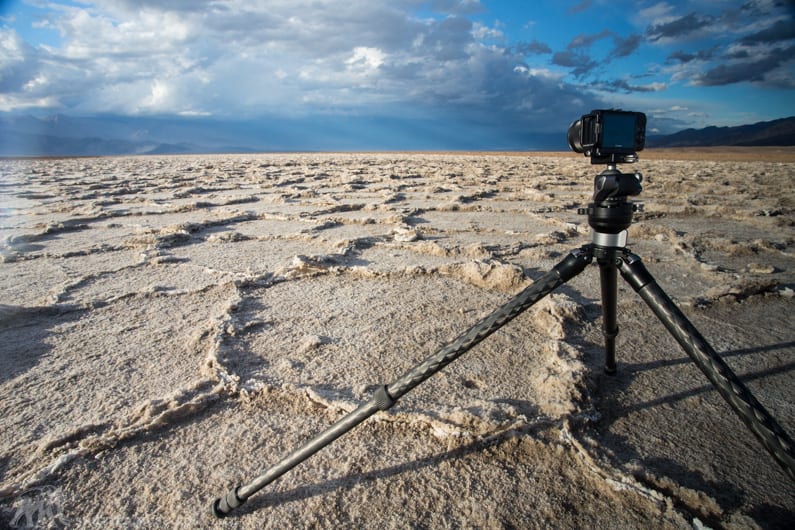
Death Valley, California
Clearly it’s not possible to experiment with some of the speeds we’ve talked about in this article without a tripod. The speed at which you’ll need to use one will depend on both the focal length you’re shooting at, and also whether your lens has image stabilization or not. Many of today’s new lenses have a 4-stop image stabilization and this means that you can shoot at much slower shutter speeds than you would be able to without IS. If you pick a shutter speed in the table above, and then scroll down 4 full stops you will be able to see what a big difference this can make! A general rule of thumb that you’ll often hear referred to is that your camera will require some additional support when you shutter speed needs to be less than 1/[Focal Length]. So if you are shooting with a 50mm lens, you might consider using a tripod if you are experimenting with shutter speeds that are less than 1/50 second. Again, stabilization might come into play, as will your own technique, so this is a mere guideline.
For very long shots like start trails and photos with running water in them, a tripod is going to be a necessity though. I would caution you against buying the cheapest one you can find though because in my experience they don’t last very long and you’ll only end up buying a new, more expensive one later on. A good tripod should last many years though and an excellent tripod could last you your entire life (or career). Some excellent brands to check out would be:
On using flash to stop action
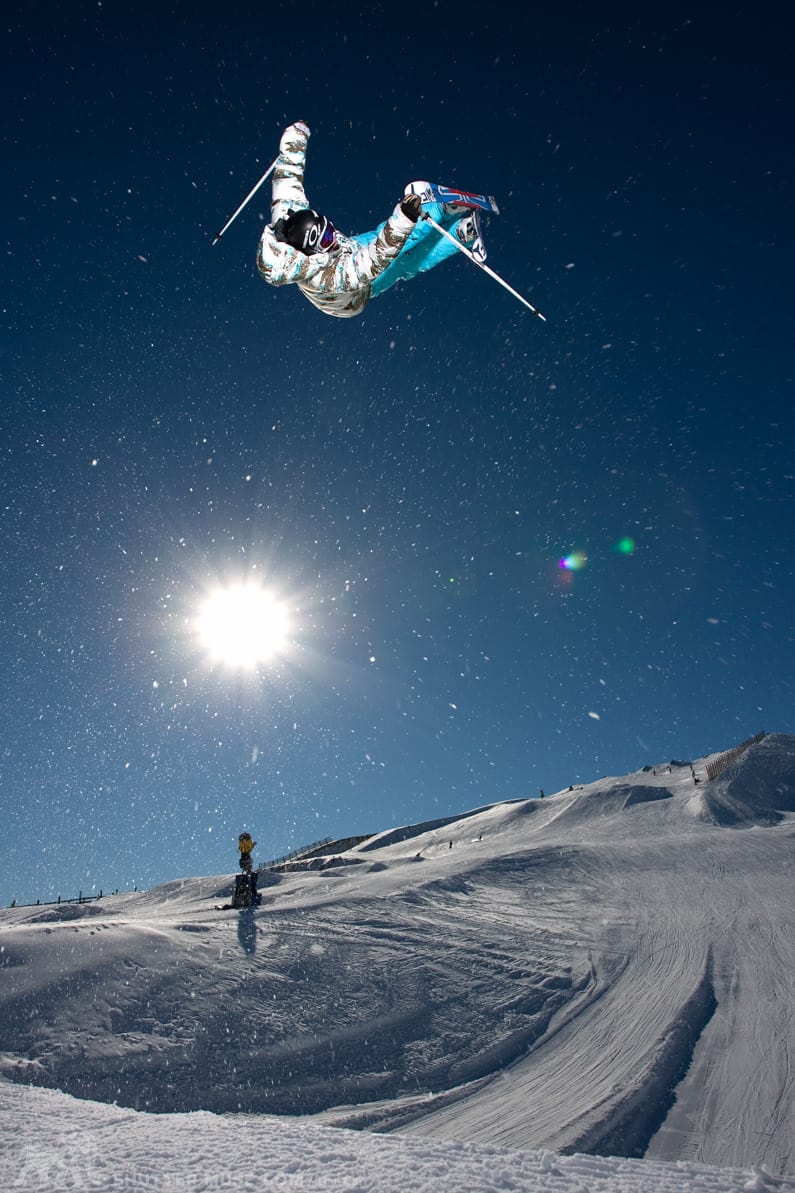
Skier flying high in New Zealand – 1/250 shutter speed with flash
I want to touch on this briefly, but an in-depth look at the how and the why of this technique is best saved for its own article. When shooting with a flash, you are often limited to the shutter speed that you can use. This upper limit of shutter speed is often referred to as the X-Sync speed or ‘cross sync’. Essentially it’s the fastest speed that you can use before the physical motion of the camera’s shutter begins to interfere with the burst of light from the flash. If you could push past this speed (many cameras won’t let you), the result would be black bands across your image where the actual shutter is getting in the way of the light from the flash. You might think this would be extremely limiting when it comes to shooting fast moving objects with flash, but the situation isn’t as bad as it seems. The example image above was shot with a shutter speed well below what you would normally think you’d need to stop action, yet it’s tack sharp! How is this?
The flash burst itself is actually helping us stop the action here because whilst the shutter speed it 1/250 second, the bust of light from the flash is only illuminating the subject for 1/1000 of a second. For 1/250 of a second the camera’s shutter is open and ambient light is slowly painting in the background of the shot, then for just l/1000 of a second, the flash pops and paints in the skier in the sky nice and sharp. I’ll cover this topic in much more detail later on but it’s good to be aware of the basics so you can keep an eye out for people using this technique.
Test Your Knowledge! Are You Ready For Manual Mode?
If you’ve read the posts about understanding shutter speed, aperture, ISO and the exposure triangle, you should have a solid foundation for your photography. We’ve designed a quick quiz with 12 questions that will bring everything together and make sure you are ready to move onwards.


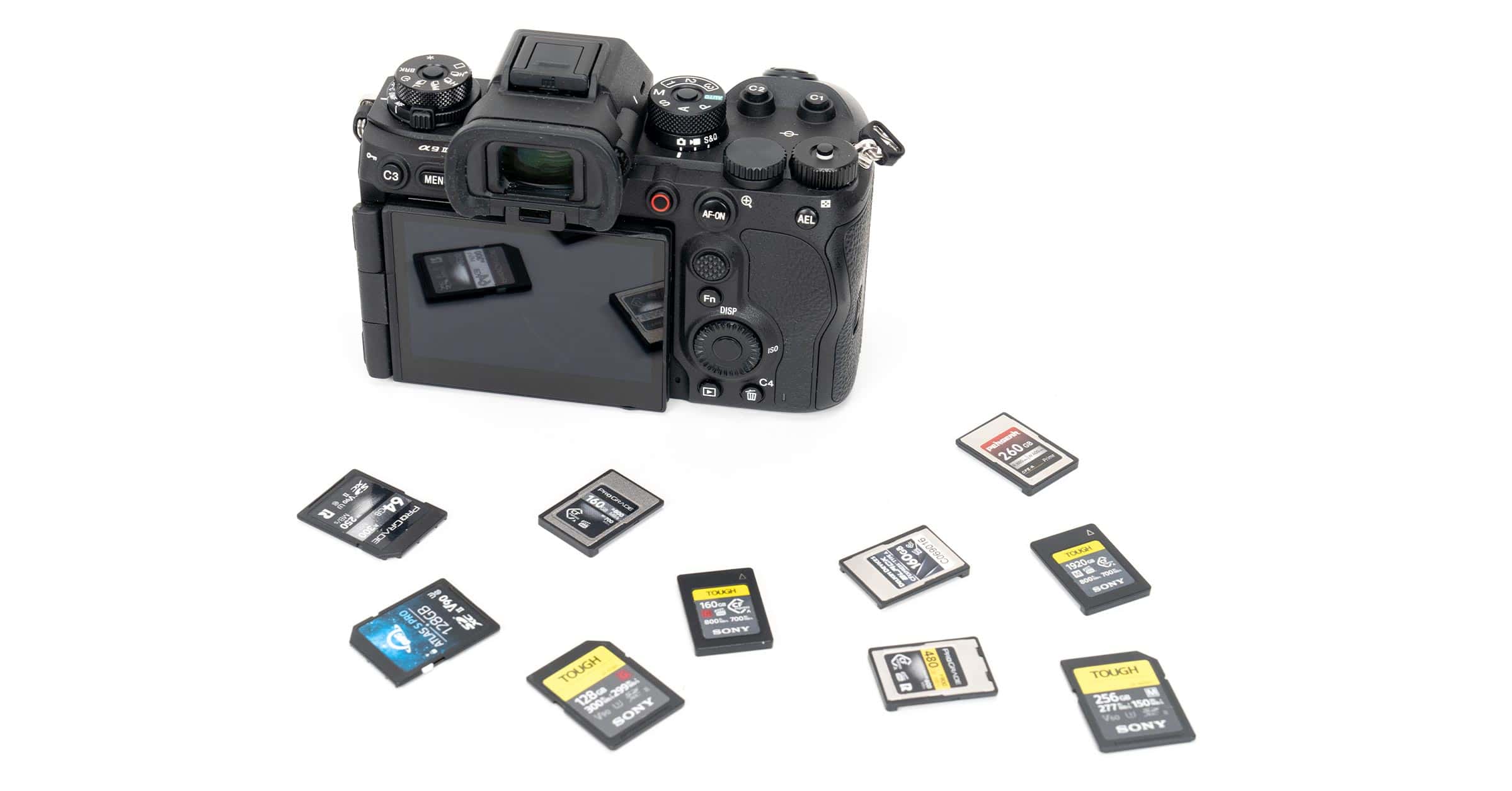
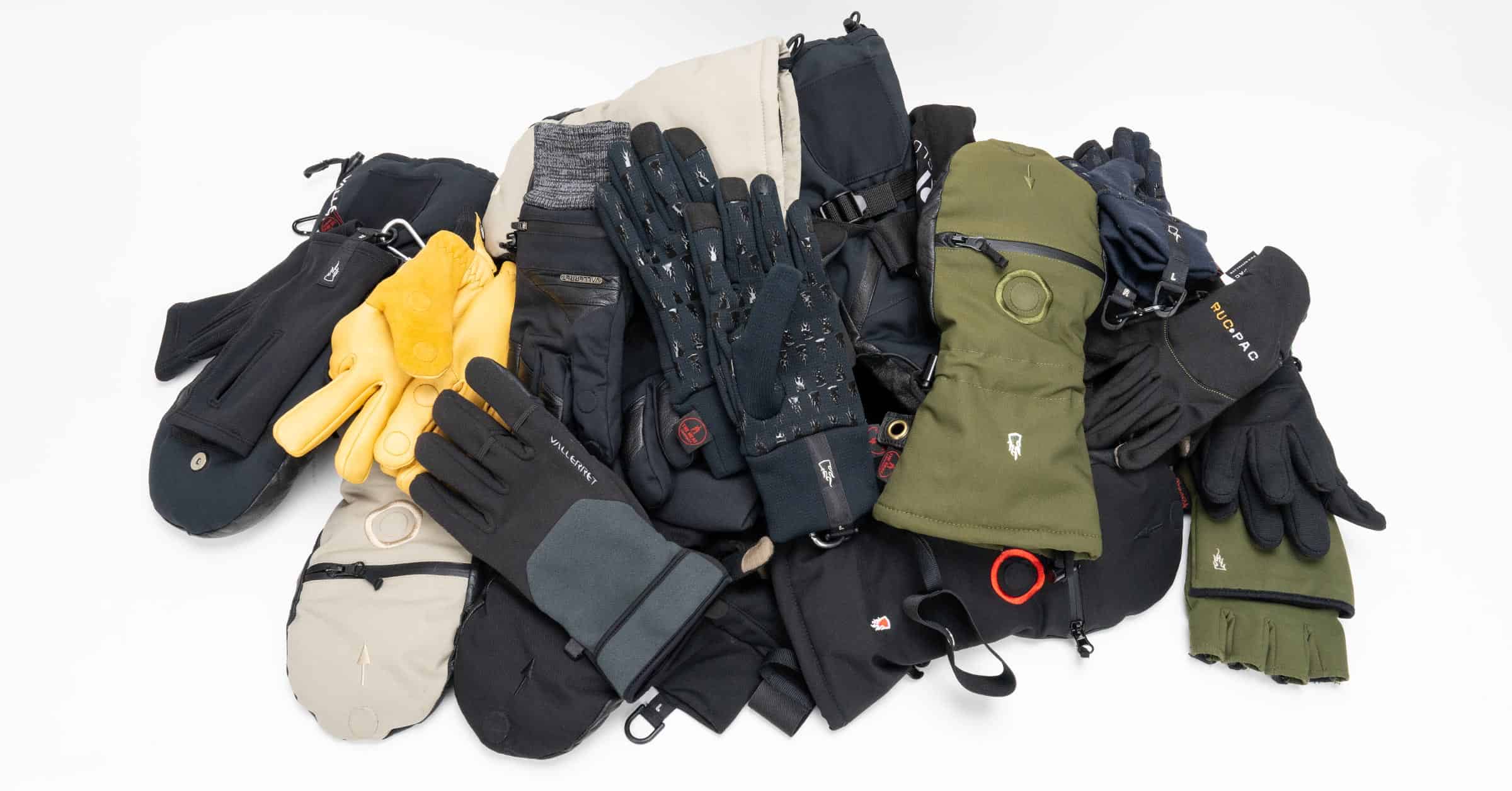
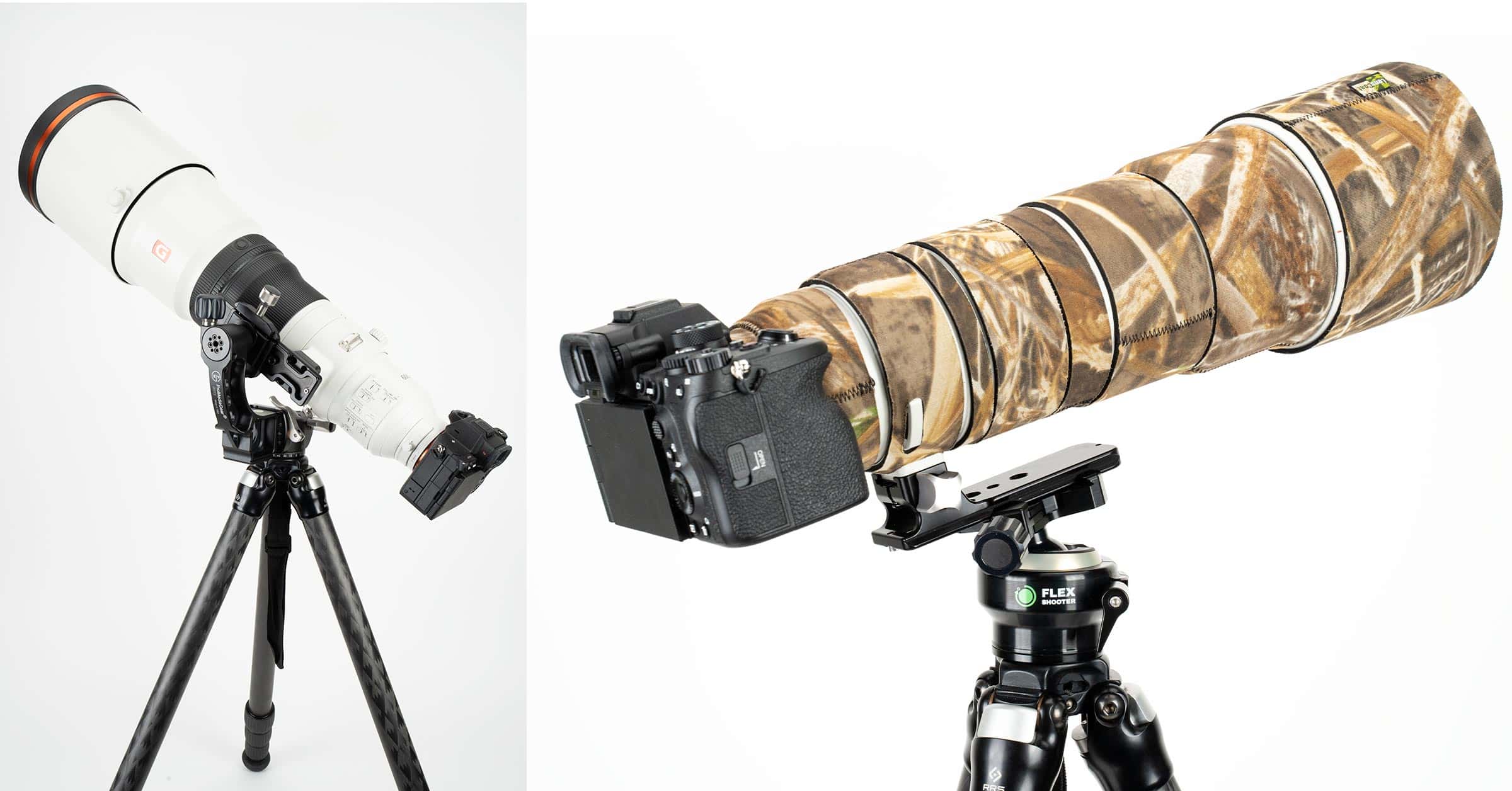
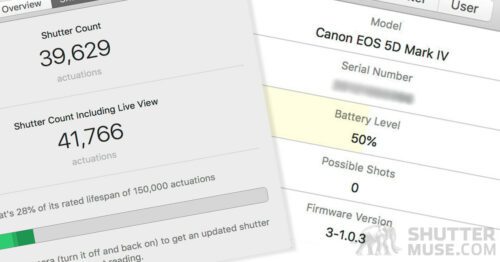


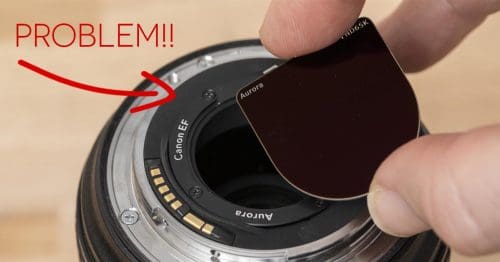
NICE, EXCELLENT, SUPER, BEST
I find Shuttermuse’s explanations of how exposure works very clear therefore very helpful. Thank you.
Thanks Julie! Glad it was helpful.
Very detailed explanation; breaks it down to understand. Some of the best articles/blogs I’ve read to help me grasp it !
Thanks Amy 🙂
Thank you very helpful
Enjoyed reading thiѕ, very goⲟd stuff, appreciate it.
“To be positive To be mistaken at the top of one’s voice.” by Ambrose Bierce.
Wow! I’ve found a very well organized post. You’re good at guiding and share some useful Q & A simply. I’ve now the shutter speed chart, even though, Do you have any recommendations for getting great shots through Nikon D3400? Thanks in advance.
Glad you liked it Lisa. “Getting great shots” is too broad a question though… I would only be able to answer with a broad answer 🙂 Practice and take some photography classes!
I have been taking pictures for over 40 years as a hobbyist. Your article is very clear, and the sample photos are great.
A great reminder of things I already knew ( or thought I knew!!)
Thanks Ron!
OMG!, Awesome post. Thank you so much.
It’s really very complicated in this full of activity life to listen news on Television, thus I only use internet for that
reason, and obtain the latest news.